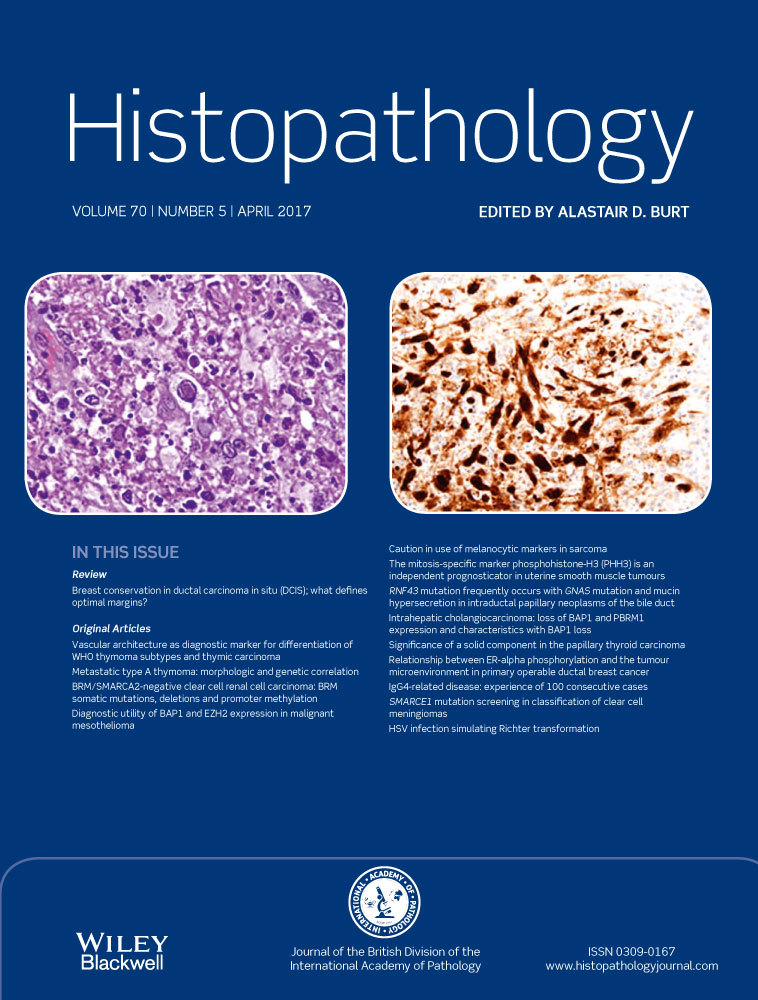IgG4-related disease—experience of 100 consecutive cases from a specialist centre
Abstract
Aims
To describe the features of 100 consecutive cases referred to a single UK institution in which a diagnosis of IgG4-related disease (IgG4-RD) was under consideration.
Methods and results
The histological features were reviewed by a single histopathologist, and cases were categorized according to the 2012 Boston criteria: Category 1—histologically highly suggestive of IgG4-RD; Category 2—probable histopathological features of IgG4-RD; and Category 3—insufficient histopathological evidence of IgG4-RD. A ‘global assessment’ was performed with the available clinical information: Assessment group 1—’definite/very likely IgG4-RD’; Assessment group 2—’possible IgG4-RD’; Assessment group 3—’not IgG4-RD’; and Assessment group 4—insufficient information. The mean IgG4+ plasma cell count and IgG4+/IgG+ ratio were highest in Category 1 [134/high-power field (HPF); 57%] and Assessment group 1 (113/HPF; 52%), and lowest in Category 3 (11/HPF; 18%) and Assessment group 3 (43/HPF; 31%) (Category comparison of IgG4+ count and ratio, both P < 0.001; Assessment group comparison of IgG4+ count, P < 0.0002; and Assessment group comparison of ratio, P = 0.04). A non-IgG4-RD diagnosis was rare in Category 1 (7%) but common in Category 2 (60%) and Category 3 (47%). Stromal reactions to neoplasia and chronic oral ulceration were simulants of IgG4-RD.
Conclusions
The Boston criteria are linked to the likelihood of IgG4-RD. Other conditions may show some histological features of IgG4-RD. The likelihood of IgG4-RD is much greater when the histological features reach the threshold for Category 1 than when they reach the thresholds for Categories 2 and 3. Despite the utility of the Boston criteria, this study highlights the crucial importance of careful clinicopathological correlation when a diagnosis of IgG4-RD is under consideration.




